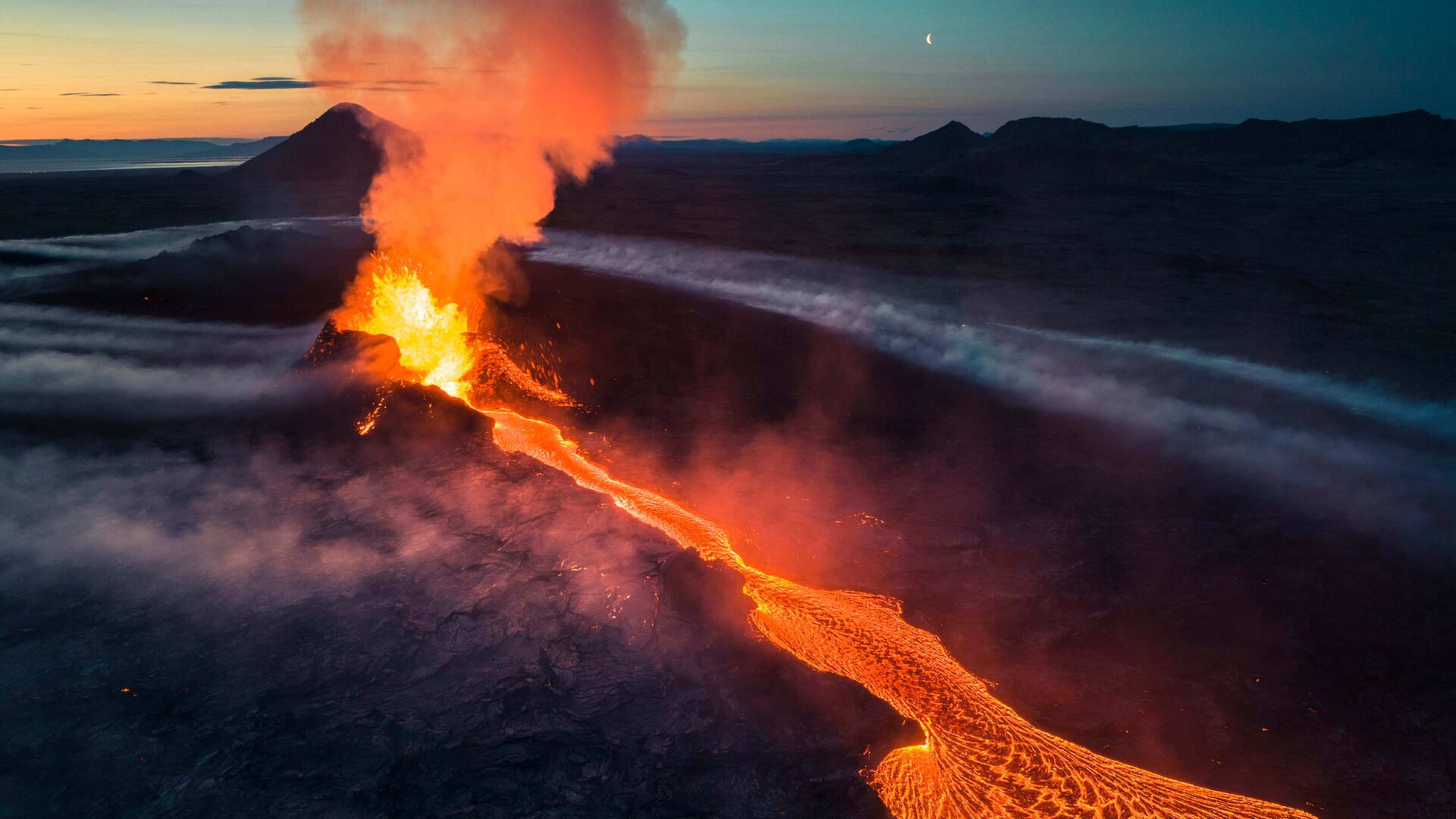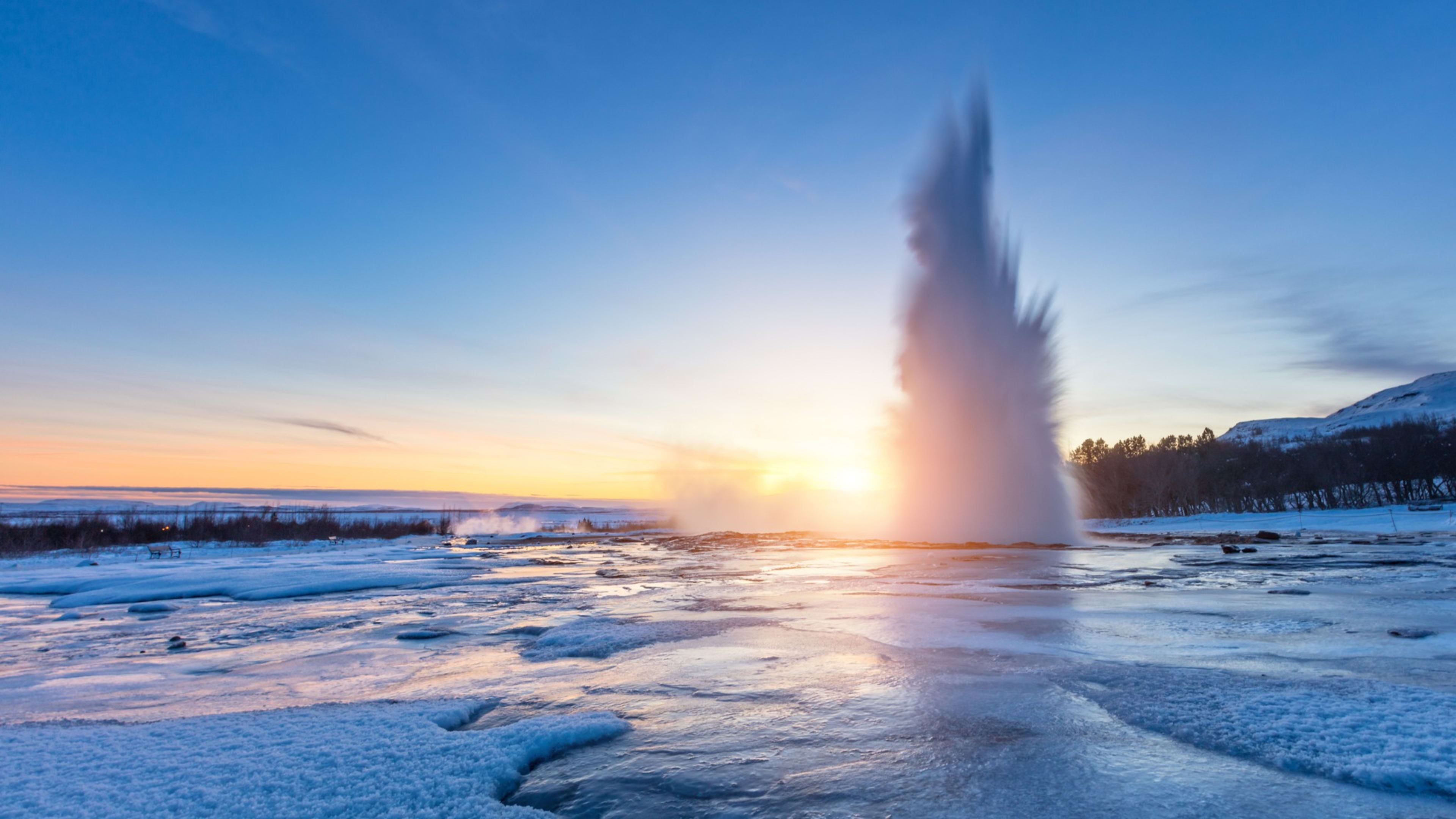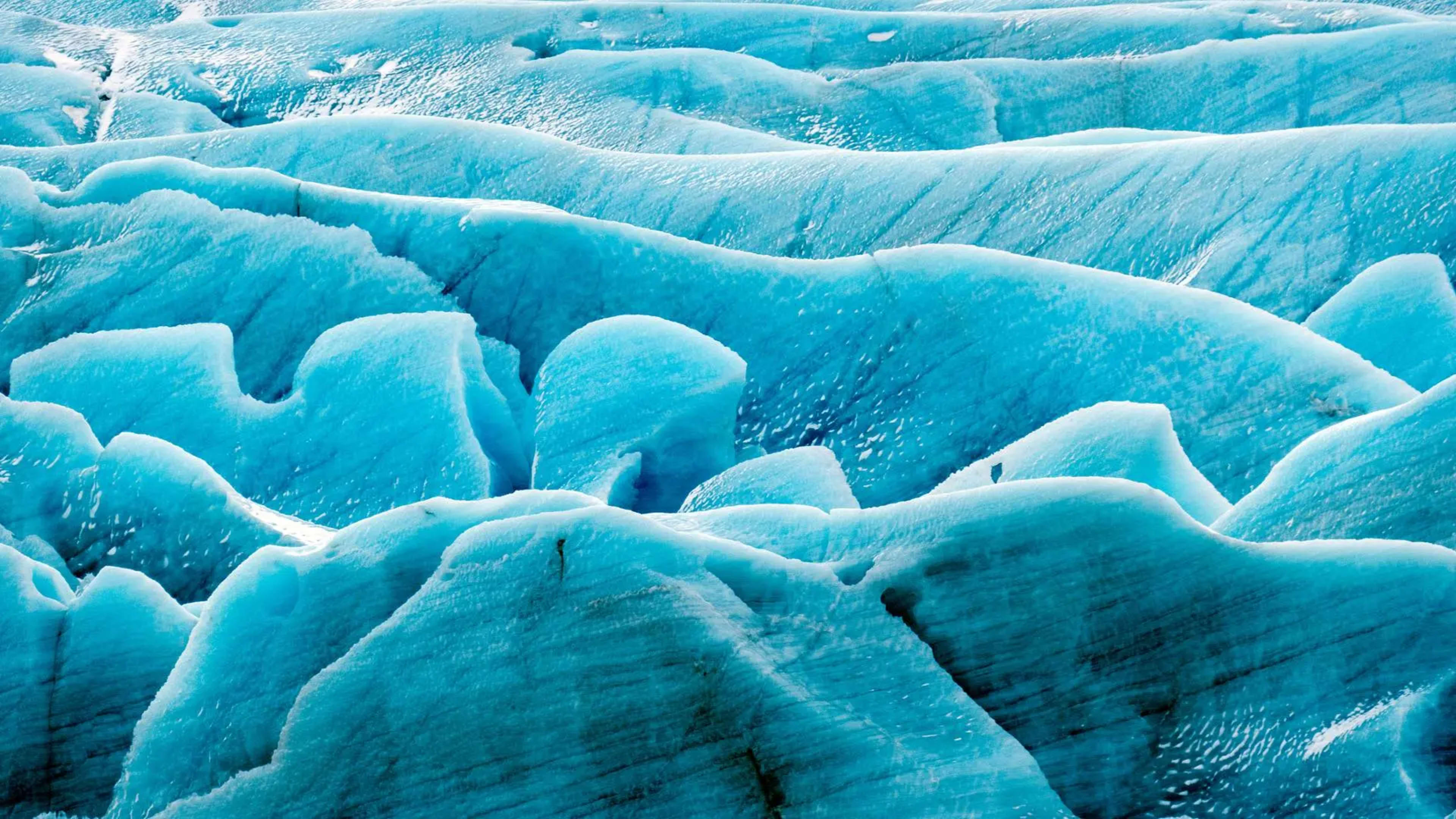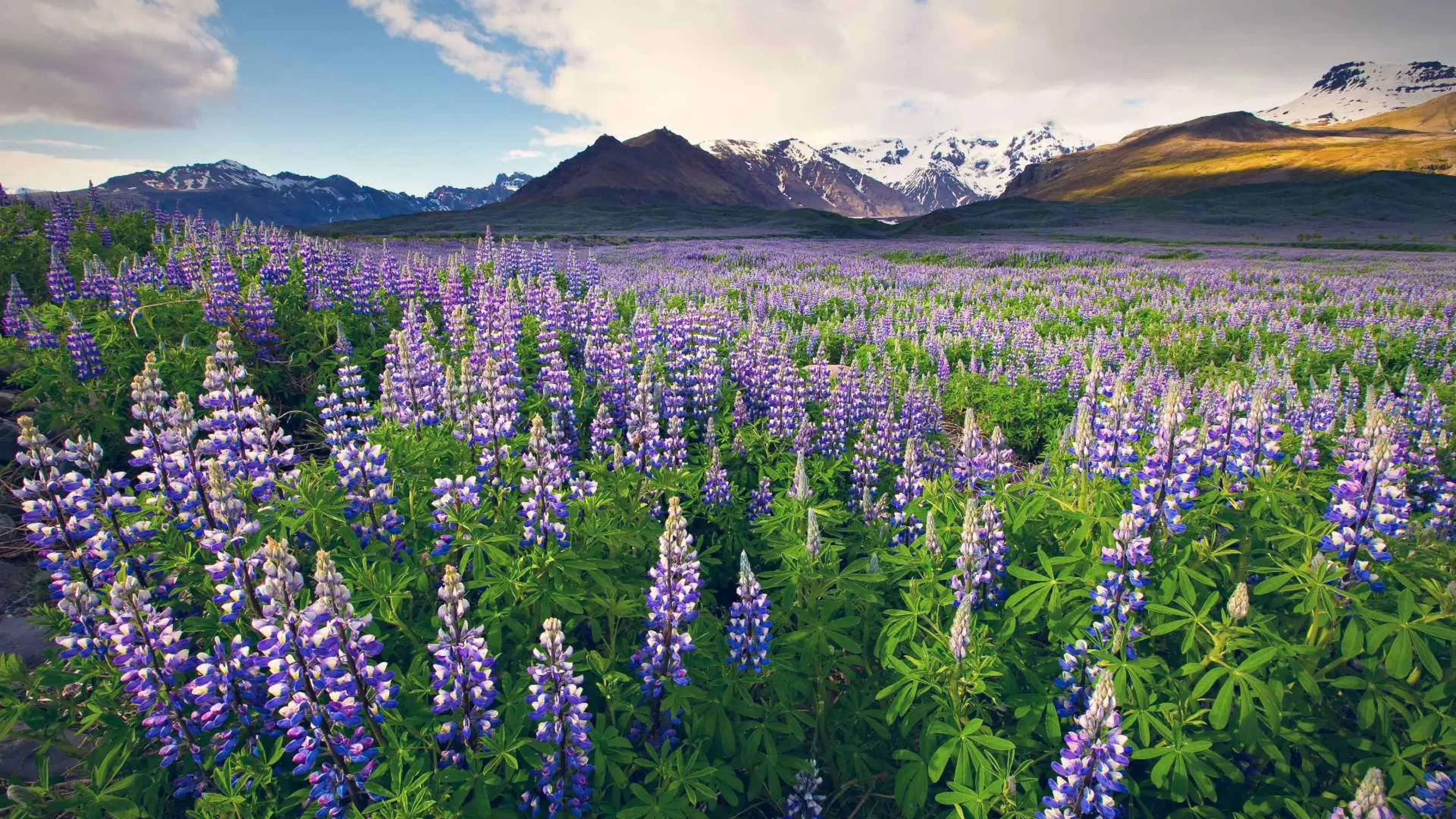Icelanders are known for being excellent stewards of their land. They rank highly on environmental protection indexes. The relatively unspoiled landscape is one of the many reasons you’ll love exploring all that Icelandic nature has to offer.
Volcanoes and geothermal activity
A geologically young part of the world, Iceland is located on both the Iceland hotspot and the Mid-Atlantic Ridge, which runs right through it. This location means that the island is highly geologically active with many volcanoes.
How many volcanoes are there in Iceland?
Volcanoes and geothermal areas are important features of the Icelandic landscape. There are at least 30 active volcanoes in Iceland and more than 160 eruptions have taken place since the country was settled in the 9th century.

On this map, you can see the most significant volcanic eruptions in the past few hundred years. There have been over half a dozen since the year 2000 alone!
When did the last volcano erupt in Iceland?
In the last 10 years, there have been eruptions under the Vatnajökull ice cap and the Hekla volcano. Just before that in 2010 was the Eyjafjallajökull eruption, which caused major disruption to international flight traffic, but no significant damage in Iceland.

The most recent volcanic eruptions took place between 2021 and 2024 on the Reykjanes peninsula. You can read all about them in our guide to the Fagradalsfjall volcano.
Are there hot springs in Iceland?
Yes! Geothermal activity can be found in nearly all parts of Icelandic nature. You’ll find it in the form of mud pools, steam vents, sulfur pits, hot springs, and the best known of all: geysers.

The most famous active geyser in Iceland is Strokkur (above), located next to its older brother Geysir in the Haukadalur valley. In fact the name Geysir is where the English word ‘geyser’ comes from!
Geothermal energy is also used to generate electricity and many hot springs are tapped for heating homes, swimming pools, and spas.
- Find out how you can experience Iceland’s hot springs for yourself.
Waterfalls
How many waterfalls are there in Iceland?
There isn’t an official count of the total number of waterfalls in Iceland. Many can be seasonal, appearing and disappearing with the seasons and changing weather. Rough estimates put the number at about 10,000.

Of course, you can see the largest and most famous waterfalls all year round. Read our guide to the top waterfalls in Iceland to find out which ones you should add to your itinerary!
The Icelandic word for ‘waterfall’ is foss. So the chances are if you see a road sign with a place name that ends in foss, it‘s going to be a waterfall. The one main exception is Selfoss, which is actually a town in South Iceland.
Glaciers
Are there glaciers in Iceland?
There are! Iceland is the best place to see glaciers in Europe. In fact, 14.3% of the country is covered in glaciers. The largest glacier in Iceland is Vatnajökull, which covers an area of 8,200 km² (3,200 square miles) and is up to 1,000 m (3,300 ft) thick in places.
- Snowmobile or hike on a glacier an Iceland adventure tour.
- Find out all about the best glaciers to visit in Iceland.

Other famous Icelandic glaciers include Langjökull, Mýrdalsjökull, and Eyjafjallajökull. And yes, you’ve guessed it, jökull means ‘glacier’ in Icelandic.
In wintertime, ice caves form underneath the larger glaciers. Read about how to explore Iceland’s ice caves in our guide.
- Check out these Iceland ice cave tour packages.
Are the Icelandic glaciers melting?
Unfortunately, glaciers in Iceland have been receding in recent decades as a result of climate change. Iceland’s smallest glacier, Ok, disappeared completely in 2014.
The glaciers are expected to slowly continue melting, so now is a great time to see them in all their glory!
Wildlife
What animals are native to Iceland?

The Arctic fox (refur or tófa) is the only land mammal native to Iceland. All other wild species have been introduced by humans, including reindeer, mink, mice, and rats.
Common domesticated species include sheep, cows, chickens, pigs, goats, the Icelandic sheepdog, and Icelandic horse. The Icelandic horse (it’s not a pony, we promise!) is known for its short stature and special fourth gait, the tölt.
Iceland’s rich coastal waters attract plentiful marine life such as minke whales, dolphins, harbor porpoises, grey seals, and brown seals.
There are no reptiles in Iceland, and no mosquitoes! Biting insects are rare, although you may well encounter midges in the summertime in wetland areas.
What birds can you see in Iceland?

There are around 70 bird species that nest regularly in Iceland, including some that don’t breed anywhere else in Europe. Typical birds you might find in Iceland include:
- puffin (lundi)
- skua (kjói)
- kittiwake (rita)
- golden plover (lóa)
- Arctic tern (kría)
Huge numbers of seabirds can be found in the bird cliffs along the coast, and waders and wildfowl attract birdwatchers from all over the world.
- Related: Best places to see puffins in Iceland.
Plantlife
Are there trees in Iceland?
Yes, although only 25% of Iceland is permanently covered with vegetation, and only 2% with woodland. Treeless landscapes, with views stretching for miles and miles, are characteristic of this part of the world.
The only native tree species in Iceland to form forests is the birch (birki). This hardy plant can withstand Iceland’s harsh winds and extremes of temperature.
The old joke goes like this: What should you do if you get lost in an Icelandic forest? Stand up!
Over the years, other tree species like larch and pine have been imported from abroad, increasing forest cover. Recently there have been efforts to reforest parts of the country in an effort to combat climate change. Every year, Iceland gets a little greener!

Are there moss fields in Iceland?
Absolutely, moss-covered lava fields are a typical Icelandic landscape. Moss and lichens are the first species to colonize newly formed rock, taking hundreds of years to form a thin layer on the surface. They provide enough nutrients for small plants, and eventually trees, to take root.
The moss is incredibly sensitive and you shouldn’t disturb it. Scars can take hundreds of years to heal.
- Find out more about traveling sustainably and responsibly in Iceland.
What other plant species grow in Iceland?
Low-growing shrubs and bushes are common in more mature landscapes. Many types of berry grow wild in Iceland, including blueberries, blaeberries, crowberries, Arctic strawberries, and juniper berries. Berry picking is a popular pastime amongst Icelanders.
Another iconic Icelandic species is angelica (hvönn), which pops up aggressively in springtime. This plant can be easily identified by its distinctive green ball-shaped flowers.

The lupine (above) is also abundant in spring and summertime, although this is an invasive species. It was imported to improve soil quality in desert areas, but it’s controversial and sparks fierce debate amongst Icelanders.
- See the lupines bloom for yourself on a summer road trip around Iceland.
